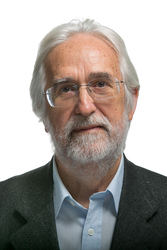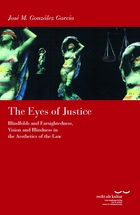Präsentation eines Grundlagenwerks zur Verbildlichung der Gerechtigkeit von José M. González García (Madrid): The Eyes of Justice. Blindfolds and Farsightedness, Vision and Blindness in the Asthetics of Law
About the author
José María González García, born 1950 in Murcia, studied philosophy and sociology at the Complutense University Madrid where he became professor for sociology at the Faculty for Political Science and Sociology in 1977. From 1980, he taught at the Complutense University as professor for philosophy, before becoming professor at the institute for philosophy of the Spanish National Research Council (Consejo Superior de Investigaciones Científicas, CSIC) in 1986, which he headed as director from 1998 to 2006. Currently, he is head of the department for Practical Philosophy and head of the research group JUSMENACU (Justice, Memory, Narration and Culture). Furthermore, he held various guest professorships in universities in Europe and Latin America, inter alia at the universities of Berlin (FU), Hamburg, Konstanz, Cambridge, Bogota and Buenos Aires. González García is “life member” of the Clare Hall College of Cambridge University and recipient of the Spanish national prize for literature in the category essay (2007). José M. González García was Fellow at the Käte Hamburger Center for Advanced Study in the Humanities “Law as Culture” from May to September 2011 and from June to December 2013.
Abstract
Should Justice be blind or should she instead be capable of seeing everything, even the human heart? José M. González García examines how the iconography of Justice evolved over the course of history. Providing an overview of depictions of Justice in various ages and places, the book mainly focuses on “The Blindfold Dispute” that began to develop during Renaissance.
While at first the blindfold was perceived as unjust, precisely because it denied Justice the ability to see everything, it transformed just a few years later into a positive symbol of the equality of all individuals before the law. And other depictions were added: supplementary eyes, transparent blindfolds, the double face of Janus, the returns of Astraea and the “Eye of the Law”. The book also analyses important historic moments in which the crisis of the Law went along with a search for new forms of representing the gaze of Justice, as reflections on the art of Dürer, Klimt and Kafka as well as recent developments in political philosophy show.
The evening will begin with opening remarks from Prof. Dr. Dr. Werner Gephart, editor of the publication series “Law as Culture”, and continue with an introduction of the book from the author himself. Lastly, Dr. Dr. Grischka Petri (Art-Historical Institute, Bonn), will comment on the piece.








